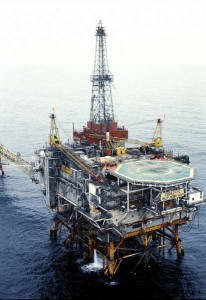Oil prices have plummeted recently, which has caused a ripple effect throughout the global economy. A wide number of reasons contribute to the steep price decline, including the widespread adoption of new drilling technologies (fracking), geopolitical issues, international oil production policies and more.
While most day to day commuters welcome lower prices at the pump, these monumental changes have both positive and negative consequences for the economy, oil and gas companies, consumers, and oil and gas financing institutions.
What’s the Cause of the Oil Price Plunge?
In the summer of 2014, prices were at $100 per barrel, and oil consumers across the globe spent $3.8 trillion on it. Today, oil prices are hovering at about $50 per barrel or nearly half of what they were just over six months ago. This also means consumers are spending about $1.9 trillion on oil, about half of what they were a half a year ago.
This striking drop in pricing has and will continue to have major effects on the larger economy. For instance, the freight and transportation sector are directly impacted by the lowering cost of fuel, which impacts the cost of fresh and packaged food, finished goods, and manufacturing.
While lower gas prices may bring a smile to the face of the average purchaser, oil and gas companies — and those who work for them — are being negatively affected. Small drilling firms and transportation companies are being hit the hardest by the oil and gas price fall. Though U.S. consumers may spur economic growth by spending their budgeted gas money on other products or services, commercial equipment financing is likely to decrease or remain flat.
Low Gas Prices Are Good for Some, Bad for Others
It isn’t only energy sector employees that are experiencing hiring stagnation, job loss or wage sluggishness. Looking at the trend from a global perspective, the price drop will continue to benefit oil consumers (developed nations) while harming oil-producers (developing nations).
Many poor, oil producing countries are feeling the pinch as their exports are being sold at such low prices. Angola, an oil-rich but cash-poor country, is seeking additional oil and gas financing as they are unable to pay back their oil and gas loans with the sale of their exports. It is one example of the common problem that many oil producing countries face. Though it may seem counter-intuitive, many countries that produce oil and gas are themselves poverty-stricken. Falling oil prices hurt them the most.
How Global Politics Impacts the Price of Oil
A wide range of geopolitical factors must be taken into consideration when discussing the falling price of oil. One top consideration is the state of OPEC, or the Organization of Petroleum Exporting Countries, which are chiefly Saudi Arabia, Algeria, Angola, Ecuador, Iran, Iraq, Kuwait, Libya, Nigeria, Qatar, United Arab Emirates and Venezuela. At a key meeting in November of last year, the organization could not come to a consensus on reducing production despite recognizing the market as “extremely well-supplied” with oil and gas.
Fracking Uproots Oil and Gas, and the Global Economy
Another significant change impacting the global and national price of oil is the now widespread use of shale oil and gas fracking or horizontal drilling. Thanks to the advanced technology and the discovery of oil and gas hiding deep underground in rocks, the U.S. is now producing more than 9 million barrels of oil a day; in 2009, it was producing less than a third of that. Decades-old government policies prohibit the U.S. from exporting oil. However, oil imports are down considerably as a result. Once unthinkable, we are now entering an age where the U.S. could be on the horizon of becoming self-reliant.
Oil and Gas Funding Companies Hit Hard by Sluggish Loan Paybacks
Low prices are causing its own set of problems for oil and gas companies in the U.S. and the banking institutions responsible for financing oil and gas projects. Flat prices mean drilling and fracking companies – as well as transportation companies – are struggling to pay back oil and gas loans. Nobody issuing oil and gas loans saw this dramatic price drop coming. As a result, banks and other financial institutions are issuing fewer oil and gas loans. It is worth mentioning that some oil and gas financing businesses have declared bankruptcy after issuing too many oil and gas loans that weren’t paid back. Some industry experts believe that the lack of oil and gas funding may in turn stall production.
Oil and Gas Factoring Companies Provide More Financing Options
With traditional oil and gas loans from banks drying up, drilling, transportation and related oil and gas companies are seeking alternative financing options such as oil and gas factoring or freight factoring. Invoice factoring services rely on the creditworthiness of a company’s clients, which makes them a good choice for those in oil and gas, as well as those in freight and transportation.
Oil and gas factoring companies say “yes” when banks say “no.” Unlike banks, they are more willing to take on greater risk. And while financing oil and gas projects using invoice factoring services won’t solve the world’s energy problems, it is an effective way oil and gas companies in the U.S. and Canada can get the financing they need to stay afloat and move ahead in this low-price market.


 Since 1991 I specialize in Invoice Factoring, PO financing and ABL facilities. I currently work internationally with companies in the US and Canada via our internet marketing division. Specialties: Accounts Receivable Factoring and Payroll Funding for Manufacturing, Oil & Gas, Telecommunications, Wholesale Trade Distribution, Staffing and Transportation. I always enjoy helping companies rise to the next level of success.
Since 1991 I specialize in Invoice Factoring, PO financing and ABL facilities. I currently work internationally with companies in the US and Canada via our internet marketing division. Specialties: Accounts Receivable Factoring and Payroll Funding for Manufacturing, Oil & Gas, Telecommunications, Wholesale Trade Distribution, Staffing and Transportation. I always enjoy helping companies rise to the next level of success.

